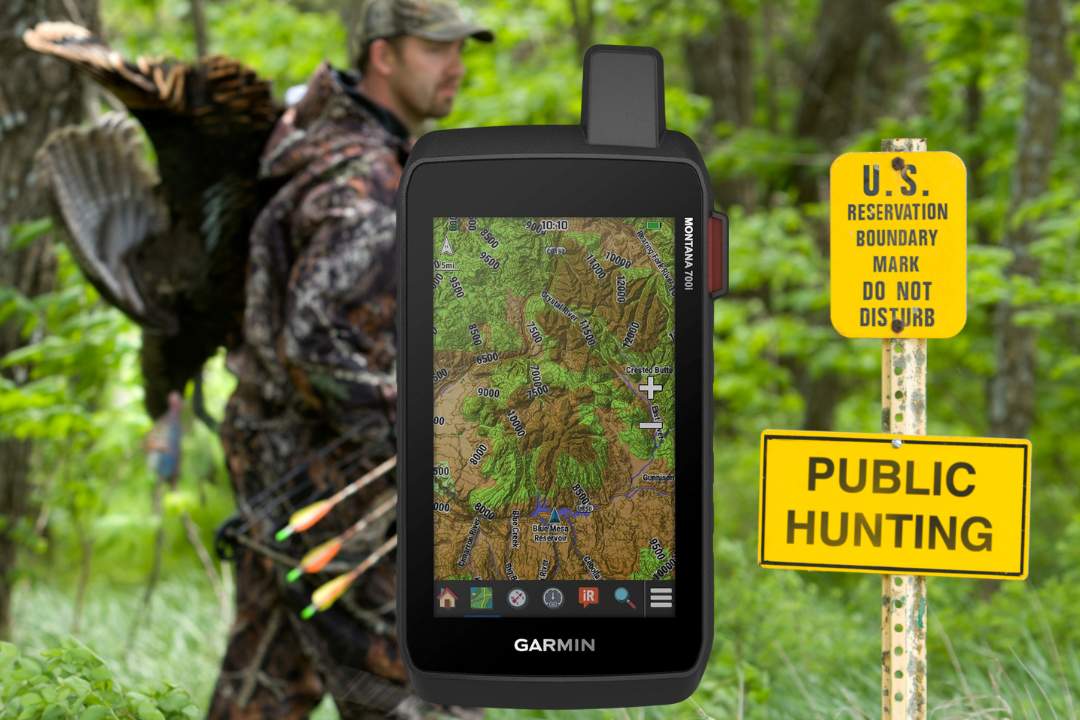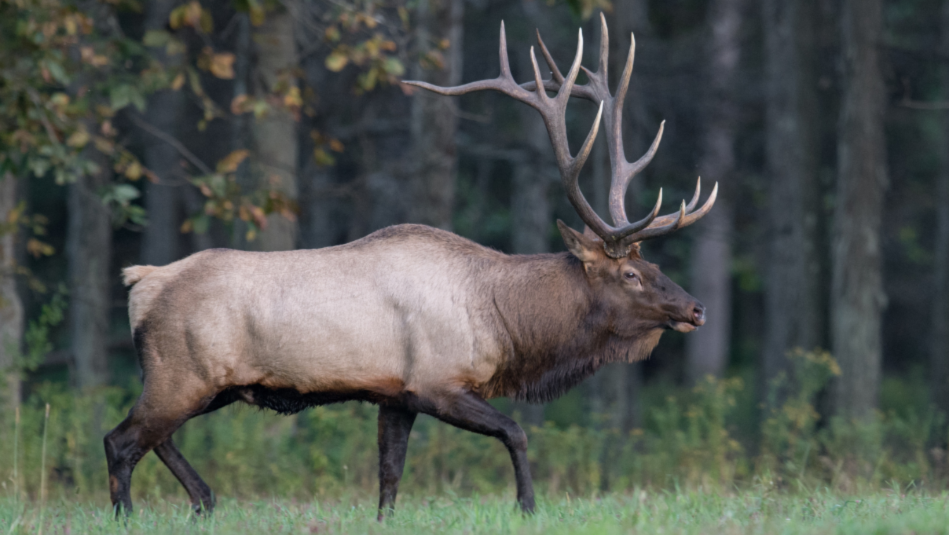What Type of Information Would You Find in a Hunting Regulations Publication
Explore the importance of hunting regulations publication. Learn about hunting seasons, licenses, safety courses, penalties, and more. Find up-to-date hunting rules for different regions and understand the significance of compliance. Become a responsible hunter with this comprehensive guide.
Hunting regulations publications contain details on licensing, bag limits, seasons, zones, legal methods, permits, firearm restrictions, and safety guidelines.
In this compact guide, we'll demystify these crucial laws, exploring everything from licensing intricacies to regional variations and understanding why they matter.
Whether you're a beginner seeking basic understanding or an experienced hunter needing updated information, we've got you covered.
Keep reading to discover how these rules govern hunting on public lands, weather restrictions, reporting requirements, and violation penalties.
Information on Hunting Regulations Publication
- General Information: Introduction to hunting regulations, obtaining licenses, permits, and stamps.
- Closures: Detailed information on hunting zone maps and areas closed for hunting activities, including weapon restrictions.
- Bag Limits: Restrictions on the number of animals that can be taken home.
- Season Dates: Specific periods when game animals can be legally hunted.
- Permit Requirements: Details on necessary permits and licenses, including special permits for specific groups.
- Species Identification: Rules regarding protected species and identification of target species.
- Firearms & Ammunition: Regulations on firearm types, ammunition limits, and non-lead ammunition requirements.
- Bait Restrictions: Prohibitions on bait usage for hunting, with exceptions for specific fishing scenarios.
- Gear Restrictions: Limitations on hunting equipment usage for safety and conservation purposes.
- Safety Guidelines: Safety precautions and guidelines for hunters.
- Conservation Efforts: Information on wildlife conservation programs and hunter involvement.
What Are Hunting Regulations?
Regarding hunting, staying updated with the latest regulations is not just a suggestion; it's a necessity. Hunting regulations are put in place to ensure the safety of both hunters and wildlife and maintain the delicate balance of our natural ecosystems.
The Dynamic Nature of Hunting Regulations: Adapting to Changes
Hunting regulations are not static. They evolve and adapt to changing environmental conditions, wildlife populations, and conservation efforts. Staying informed about these updates ensures you're aware of any changes in hunting seasons, bag limits, or restricted areas.
Safety First: Protecting Yourself and Others
Safety is a paramount concern in hunting, and updated regulations are vital in promoting safe practices. Hunting regulations publications provide crucial information about firearm safety, hunting techniques, and required equipment.
Avoid Legal Consequences: Preventing Violations
Violating hunting laws can lead to serious legal consequences, including fines, license revocation, or even criminal charges. By regularly consulting hunting regulations publications, you can avoid unintentional violations and ensure that your hunting activities remain within the bounds of the law.
Preserve Wildlife and Habitat: Contributing to Conservation Efforts
Hunting regulations serve a broader purpose: wildlife conservation. These regulations are designed to manage hunting activities sustainably, protecting wildlife populations and their habitats. By following the guidelines and being aware of updates, you actively participate in conservation efforts, contributing to preserving our natural resources for future generations.
Type of information included in a hunting regulations publication
A hunting regulations publication provides information on laws and regulations related to hunting. They contain information to ensure hunters can pursue their activities responsibly and safely.
The specific information included may vary depending on the location and publication but generally includes the following:
- General Information:
This may include an introduction to hunting regulations and laws and information on obtaining hunting licenses, permits, and stamps.
- Closures:
This section of a hunting regulations publication will provide detailed information about hunting zone maps and areas closed for hunting activities. In some cases, these closures may be permanent or open only during certain times of the year - like when animal populations are at their lowest levels or when species mating seasons are taking place.
Closures can also pertain to specific types of weapons that may not be used in certain areas (such as bow-only zones).
- Bag Limits:
This portion of the publication will explain any restrictions on how many birds or mammals a hunter can take home after a day in the field. Different species often have different harvest limits based on population numbers and type/age/sex classifications (for example, there might be separate regulations for antlerless deer than for bucks.)
- Season Dates:
Most publications also have sections dedicated solely to season dates, which detail when each type of game animal can be legally hunted within a given area or region.
Seasonal dates often overlap between genres - meaning hunters must know what species they plan on pursuing before entering an area so they do not accidentally violate any regulations unknowingly.
- Permit Requirements:
Regulations may require anyone who hunts in their jurisdiction to obtain special permits before engaging in outdoor activities like fishing or trapping; this section usually details exactly what type of permit one needs to comply with legal standards set forth by respective authorities managing wildlife conservation efforts within given boundaries!
Information on necessary licenses and permits, how to obtain them, license fees, and when they need to be renewed is another crucial component of these regulation publications. The information it contains includes details about license sale dates and special licenses for youth, disabled individuals, disabled veterans, seniors, and so on.
- Species Identification:
You need to recognize the species that you'll be hunting and learn to differentiate them from closely related species. All states have different species-specific rules regarding bag limits, season dates, licensing requirements, etc.
So it's important to know which species you're attempting to hunt before setting out for your trip. Hunting regulations will also list which species are protected (i.e., cannot legally be hunted) within a given area.
- Firearms & Ammunition:
Many states have strict rules and regulations about what type of firearm may be used while hunting certain games and how much ammunition a hunter may carry at any given time.
Additionally, some locales have adopted non-lead ammunition requirements for certain areas to limit long-term damage caused by lead poisoning on target animals (wildlife).
- Bait Restrictions:
Bait is generally prohibited while hunting wild animals; however, some exceptions exist when fishing for specific species (such as catfish) with artificial bait lures/bait fish that meet the fishing regulations of certain states.
- Gear Restrictions:
In most cases, there are restrictions on what type of hunting gear and equipment you can use while harvesting certain species, either due to safety concerns (for example, bowhunting only deer) or conservation efforts (harvesting certain waterfowl with non-toxic shots only).
Regulations will also detail if electronic calls and other types of equipment are legal to use during a hunt as well as laws concerning baiting wildlife, which vary by region and even sometimes within states themselves.
- Safety Guidelines:
Safety is paramount in hunting activities, and these publications often include guidelines to ensure hunter safety. This might include wearing certain colors for visibility, handling firearms safely, and what to do in case of an accident.
- Conservation Efforts:
Many publications also include information on the state wildlife programs' conservation efforts, explaining how hunters contribute to these efforts and how they can get more involved.
Remember, while this guide provides a general overview of what's typically included in hunting regulation publications, the specific contents can vary from state to state.
Always check with your local wildlife agencies or their website for the most accurate and up-to-date information.
Finding Hunting Regulations Publications
If you enjoy hunting, keeping up with the latest regulations is important to stay safe and legal. Finding reliable publications for hunting regulations in your area will give you the confidence to go on your hunting trips. Your goto sources should be:
Government Websites
Visit the official Wildlife agency's website of your state's fish and wildlife agency or the equivalent authority. Look for dedicated sections or pages specifically tailored to hunting regulations.
Hunting Associations and Organizations
Hunting associations and organizations can also be excellent sources for publications on hunting regulations. They frequently compile and disseminate accurate and relevant information.
Local Hunting Stores and Conservation Offices
These establishments are often well-versed in local hunting regulations and can guide you to the right resources. Stop by, chat with the knowledgeable staff, and ask for printed copies or recommendations for online sources.
Finding publications on hunting regulations is crucial to becoming a responsible and law-abiding hunter. Stay informed, follow the regulations, and embark on memorable hunting adventures while respecting the natural world.
Here's a list of resources for the hunting regulations publications for all the states in the USA:
- Alabama
- Alaska
- Arizona
- Arkansas
- California
- Colorado
- Connecticut
- Delaware
- Florida
- Georgia
- Hawaii
- Idaho
- Illinois
- Indiana
- Iowa
- Kansas
- Kentucky
- Louisiana
- Maine
- Maryland
- Massachusetts
- Michigan
- Minnesota
- Mississippi
- Missouri
- Montana
- Nebraska
- Nevada
- New Hampshire
- New Jersey
- New Mexico
- New York
- North Carolina
- North Dakota
- Ohio
- Oklahoma
- Oregon
- Pennsylvania
- Rhode Island
- South Carolina
- South Dakota
- Tennessee
- Texas
- Utah
- Vermont
- Virginia
- Washington
- West Virginia
- Wisconsin
- Wyoming
Also, Remember that regulations can change frequently, so always double-check current information and contact the relevant state wildlife agency for the most up-to-date details before your hunt. You can explore specific information by region on:
- National Wildlife Federation: Their website provides state-by-state summaries of hunting regulations, including license requirements, seasons, bag limits, and prohibited methods. While not as detailed as individual state websites, it's a helpful starting point for broad comparisons.
- Hunt & Fish Finder App: This mobile app by the U.S. Fish and Wildlife Service allows you to find hunting and fishing regulations for specific locations within each state. It utilizes GPS and interactive maps to provide easily accessible information on the go.
- Hunting Associations: National and regional hunting associations, like the National Rifle Association (NRA) and the Rocky Mountain Elk Foundation (RMEF), often offer resources and tools for navigating hunting regulations by state. They may have downloadable guides, online forums, or contact information for local chapters with expertise in specific regions.
- Professional Hunting Guides: Consider contacting a reputable hunting guide in your target region. They will have in-depth knowledge of the local regulations and can provide personalized advice tailored to your specific hunting goals and desired species.

Types of Hunting Licenses and Permits in Different States
Understanding the different types of hunting licenses and permits in various states can be confusing, but with a little guidance, it's easy to navigate. Hunting license requirements can vary widely from state to state, so it's important to familiarize yourself with the regulations in your area. Generally speaking, they can be:
A. Resident Hunting License
- Available to individuals living in the hunting state
- Grants general hunting privileges
- Required for most hunting activities
B. Non-Resident Hunting License
- Designed for individuals residing outside the hunting state
- Allows hunting within specified regulations
- Often available for specific durations or limited areas
A. Season-Specific Permits
- Issued for hunting during specific seasons
- Example: Deer tags or turkey permits
B. Species-Specific Permits
- Required for hunting certain species
- Ensures conservation efforts and population control
- Examples: Elk permits, waterfowl stamps
C. Weapon-Specific Permits
- Regulates hunting with specific weapons
- Commonly for archery, muzzleloader, or firearm hunting
A. Tagging Requirements
- Some species require tags to be attached to harvested animals
- Ensures proper reporting and management
B. Draw Permits
- Issued through a lottery or draw system
- Limited availability for popular hunting areas or species
- Requires application and often associated fees
C. Youth and Senior Permits
- Special permits for young or senior hunters
- Encourages participation and provides tailored opportunities
Secure your footing in the wild - explore the best turkey hunting boots

Hunting on Public Lands and Wildlife Management Areas: Navigating Regulations for Bountiful Adventures
When it comes to hunting, the allure of exploring public lands and wildlife management areas is unmatched. Whether it's a national forest, state park, private land, or other public land, these vast territories provide ample opportunities for hunters seeking new challenges and untamed beauty.
These pristine landscapes promise remarkable hunting experiences, but they also come with specific regulations that ensure the preservation of these habitats. Also, remember to respect the landowner if you are hunting on private lands.
Regulations Specific to Public Lands & Wildlife Management Areas
1. Permit and Licensing Requirements
When hunting on public lands or WMA, it's essential to ensure you possess the required permits and licenses specific to the area. Some areas may require special permits or access arrangements to ensure sustainable hunting practices. Research the regulations beforehand and obtain the necessary documentation to avoid legal complications.
2. Restricted Zones and Boundaries
Public lands and WMAs often designate certain areas as restricted or off-limits to hunters. Familiarize yourself with these boundaries to respect wildlife habitats and prioritize safety.
3. Seasonal Restrictions and Bag Limits
These areas may have specific hunting seasons, species-specific regulations, and bag limits to regulate wildlife populations effectively. Stay informed about these restrictions to adhere to bag limits, gender restrictions, and other guidelines to hunt responsibly and contribute to sustainable conservation efforts.
By limiting hunting methods and areas of access, these regulations help protect animals and conserve their habitats.
Understanding Penalties and Consequences for Violating Hunting Regulations
As responsible hunters, it's crucial to understand and abide by these regulations to ensure wildlife preservation and the sustainability of our hunting practices. Let's dive in and explore what happens when hunting regulations are violated.
Common Hunting Violations and Their Penalties
1. Unlawful Harvesting:
- Taking down game outside designated hunting seasons or prohibited areas or going beyond carrying capacity
- Engaging in illegal hunting practices (e.g., spotlighting, hunting from a vehicle)
- Penalties: Hefty fines, loss of hunting privileges, and potential imprisonment
2. Failure to Obtain Proper Licenses and Permits:
- Hunting without a valid hunting license or specific permits required for certain species or areas
- Penalties: Fines, potential loss of hunting privileges, and confiscation of equipment
3. Non-Compliance with Bag Limits and Tagging Requirements:
- Exceeding the specified bag limits for a particular species
- Failing to tag harvested game as required properly
- Penalties: Fines, potential loss of hunting privileges, and confiscation of illegally harvested game
Consequences of Non-Compliance with Hunting Regulations
1. Legal Ramifications:
- Criminal charges and potential imprisonment for severe violations of hunting laws and regulations
- Creation of a criminal record that can affect employment and other aspects of life
2. Ecological Impact:
- Disturbance of ecosystems and wildlife populations due to overhunting or illegal practices
- Damage to natural habitats and disruption of wildlife breeding cycles
3. Reputational Damage:
- Negative perception from fellow hunters, conservation organizations, and the public
- Loss of respect within the hunting community
4. Loss of Privileges:
- Hunting license suspension or revocation
- Ineligibility for future permits, tags, or special hunting opportunities
Tips for Ensuring Compliance with Hunting Regulations
1. Stay Informed:
- Regularly consult official hunting regulations publications specific to your area
- Stay updated on any changes or additions to hunting regulations
2. Educate Yourself:
- Participate in hunter education and safety courses to learn about local regulations and ethical hunting practices
- Seek guidance from experienced hunters or local conservation agencies
3. Be Diligent:
- Understand the bag limits, tagging requirements, and hunting seasons for the species you intend to hunt
- Keep accurate records of the harvested game and report as required
Ensure a safe and successful hunt with our essential Hunting Plan.
Final Thoughts
Respecting and complying with hunting regulations is essential for preserving wildlife and their habitats and the future of our hunting traditions.
By understanding the hunting regulations passed and the consequences of violating these regulations, we can ensure a sustainable hunting experience for generations.
Let us embrace our role as responsible hunters, respecting nature and setting an example within our community. Happy hunting, and may your adventures always remain within the boundaries of the law.
💡 Another way to publicize the protection of wildlife and make more people aware of it is to customize small gifts with wildlife elements and distribute them to people in the community to promote and popularise the subject.
For example, Pins.US is a great choice because they are reliable, widely used, and can play a vital role in publicity.


Also, check out some of our other articles:






